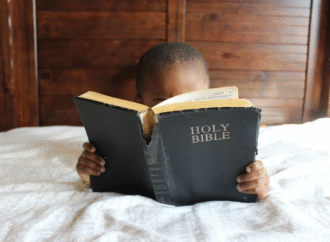In her forthcoming witty—often snarky—book Domestic Extremist: A Practical Guide to Winning the Culture War, Peachy Keenan writes of her group of acquaintances, “Because I have fewer than eight children, I am something of a lightweight.” She then recounts the following incident: “A friend my age recently welcomed her twelfth baby. (That’s a one followed by eleven more.) I mistakenly asked her if the new baby was number thirteen. ‘Thirteen! Come on, that’s crazy!’ she laughed.”
Though pseudonymous Peachy Keenan makes her home in Southern California while I reside across the country in Virginia, we apparently both live in communities where large families are the norm. Here in my town, particularly at my church, you’ll find an abundance of households teeming with seven, eight, and 10 children. Because I’m accustomed to hanging around parents half my age whose squad of children, from toddlers to teens, are darting about the house and yard, nothing in this situation strikes me as unusual, but some of my friends and relatives fall into a shocked silence when I describe these get-togethers. For them, a large family is three children, a cat, and a dog.
The large families in my community tend to be traditional in that the fathers bring home the money and the mothers manage the household. The fathers I know, for instance, work in construction, law, real estate, medicine, software sales, and education. Three of the moms work part time at home, but all have charge of their children’s education (all but two have chosen private academies or homeschooling), manage the household (often including the finances), and drive the gang to various extracurricular activities. You can easily identify them by the 12-passenger vans you see rolling around town.
By their very existence, these families bust one major myth. Using U.S. Department of Agriculture statistics, one estimate puts the cost of raising a child from birth to age 18, adjusted for inflation, at $288,094. This figure breaks down to an average annual cost of $16,005. Multiply that by four, five, or six children, and the figure becomes astronomical.
It’s also dead wrong.
Why? Because that estimate includes perks like restaurants, day care, and other amenities that large families—or, for that matter, small families on a tight budget—consider extraneous. Plus, the U.S. Department of Agriculture even notes that the cost per child decreases with each additional kid.
My wife and I had four children, all of whom are now raising four or more of their own. Some of my relatives have made comments to me about overpopulation, apparently unaware that most populations around the world are in decline. The birth rate in our country, for example, continues to fall. Replacement level for a population is around 2.1 births per female, yet here in America, that number is about 1.7. The irony here is that soon the children of these families will be in the workforce and, with the taxes on their income, providing their critics with Social Security and Medicare benefits.
But that is nowhere near the greatest gift given to the rest of us by these parents who lovingly raise a ménage of children.
These moms and dads are the true counterculturists of our time. They may not see themselves as such, but they are swimming against the current of a river reeking with filth and garbage. Most of them raise their children in a religious faith, teach them civics and the story of America, instruct them in virtues by word and example, and encourage critical thinking skills. The family, as it has been throughout human history, is for them the core of society and culture.
And as these young people leave home, off to higher education or the workplace, they’ll be taking these values with them. Someday, when they’re raising families of their own, the great majority of them will pass those same values to their offspring, again a timeless practice.
As Keenan notes in her book, “This is a lifestyle that will reorient you away from the broken culture and towards a family, your home, and your best chance at true, lasting happiness.”
One hundred years ago, in Fancies Versus Fads, G.K. Chesterton added another garland when he wrote, “The family is the test of freedom; because the family is the only thing that the free man makes for himself and by himself.”
It is the family, large or small, that stands against the raw power of the state and the intrusions of our ugly, amoral culture. In this age of chaos, mendacity, and corruption, the family stands as the last bastion of law, order, morality, and virtue, and we should do all in our power to encourage its survival.
—
Image credit: PickPik
















1 Comment
Mikko
May 17, 2023, 1:26 amThanks again Jeff.
REPLY